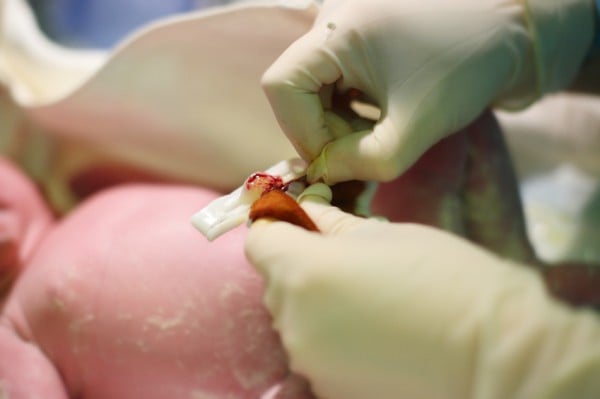
Pregnant woman take note.
It’s an abrupt way to start your life. There’s leaving the place you’ve called home for around nine months. There’s getting through your own birth (yes, mums, birth is hard for you too). And then, to top it off, these random people cut the cord attached to your food source.
No wonder babies cry. I would too if someone took away my source of life so abruptly. But this is all completely normal when it comes to the birth procedure.
In the UK, however, things have changed. The birth practice that has been taught to midwifes and doctors for many many decades is doing a complete 180. Normally, the first thing that happens after the birth is the umbilical cord is cut. Sometimes by dad. Normally by the doctors or midwife.
But after UK midwife Amanda Burleigh has campaigned for a solid 10 years, the practice is no longer deemed the best way for baby.
"[Previously] midwives and doctors have resisted the idea [of delayed cord cutting] because they say if the cord is left the baby can become jaundiced, or receive too much blood. But research does not back this up," Burleigh told The Telegraph UK.
After practicing what she'd been taught for 16 years, to cut the cord immediately after birth, Burleigh started questioning the practice.
"[I started to reflect] on my own practice as a midwife and how we were trained to cut the cord immediately. I realised quickly that there was no evidence to back this practice up and set about challenging this non-evidence based intervention."
Burleigh decided to research the benefits, if any, of not cutting the cord immediately after the birth.
Watch the video for newborn umbilical cord care for new parents. Post continues after the video...